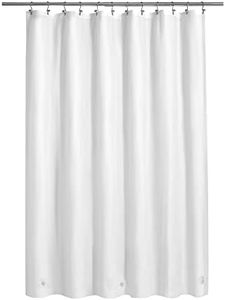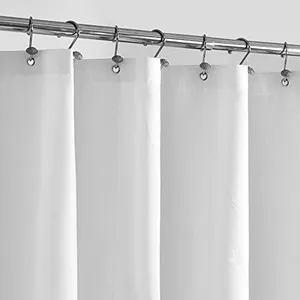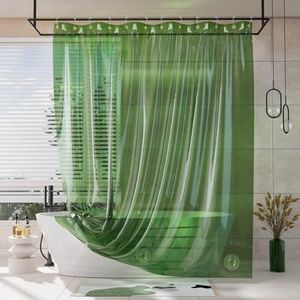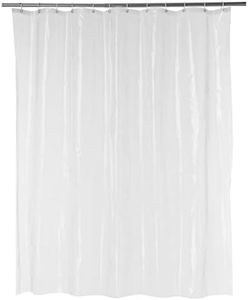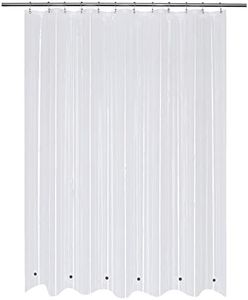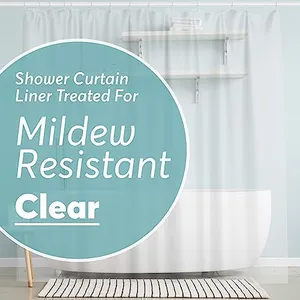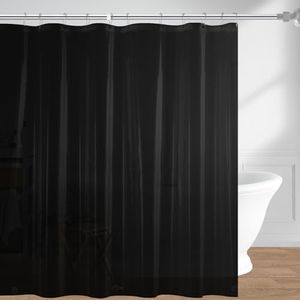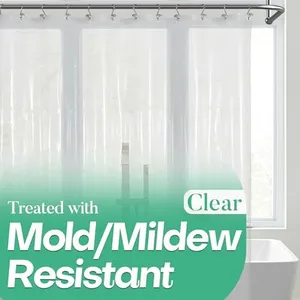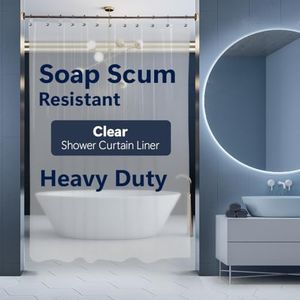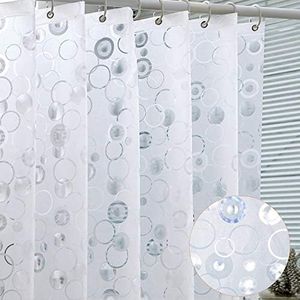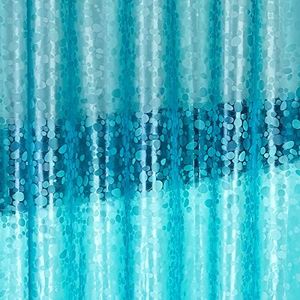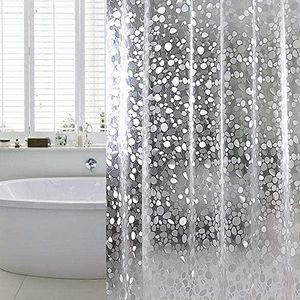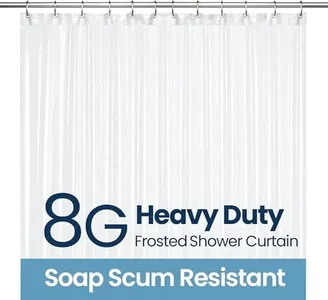We Use CookiesWe use cookies to enhance the security, performance,
functionality and for analytical and promotional activities. By continuing to browse this site you
are agreeing to our privacy policy
10 Best Non Toxic Shower Curtain Liner
From leading brands and best sellers available on the web.Buying Guide for the Best Non Toxic Shower Curtain Liner
When choosing a non-toxic shower curtain liner, your main goal is to ensure both safety and functionality in your bathroom. A non-toxic option means avoiding materials that can release harmful chemicals, especially in a steamy environment like a shower. By understanding the key features and how they affect performance and safety, you can select a liner that keeps your household healthier and your bathroom clean and fresh.Material CompositionMaterial composition refers to what the liner is made of. This is important because certain plastics like PVC (polyvinyl chloride) can release chemicals called phthalates and VOCs (volatile organic compounds) when heated by a hot shower, which may have adverse health effects. Look for liners made of PEVA, EVA, polyester, or organic cotton, as these are generally considered safer and less likely to emit these chemicals. PEVA and EVA are types of vinyl but without harmful additives, polyester is a synthetic fabric often used in fabric liners, and organic cotton is a safe, natural fiber. Consider your sensitivity to chemicals and your environmental priorities when choosing the material.
Mildew and Mold ResistanceMildew and mold resistance indicates how well the liner prevents the growth of fungi that thrive in damp environments. This is important because mold and mildew can not only cause odors and unsightly stains, but also trigger allergies and other health concerns. Some liners are treated with special coatings or are made from materials naturally resistant to microbial growth. If you want less maintenance, or if anyone in your household has allergies, choose a liner that specifically advertises these properties for better hygiene and easier cleaning.
Thickness and DurabilityThe thickness of a shower curtain liner helps determine how durable it is and how well it will hang in your shower. Thicker liners (measured in gauge or mm) tend to last longer, hang better, and are less likely to blow inward during a shower. Thinner liners are more lightweight and affordable, but may wear out faster and need replacement sooner. If you want something for long-term use, opt for a heavier or thicker liner. For a guest bathroom or temporary use, a thinner liner may suffice.
Transparency and AestheticsThe level of transparency—how see-through the liner is—affects both privacy and style. Some liners are completely clear, offering a modern, minimal look and allowing more light into the shower, while opaque or frosted options provide more privacy and may better conceal soap or water marks. Choose a transparency level based on your privacy needs and your bathroom’s appearance. If privacy is a concern or you want to hide any buildup, opt for frosted or opaque. For brighter, more open-feeling showers, consider clear.
Ease of CleaningEase of cleaning refers to how simple it is to keep the liner fresh and free from soap scum or mildew. Some liners can be tossed directly into the washing machine, while others need to be wiped down with a cloth or sponge. Machine washable liners are easier to maintain, especially in busy households. If you prefer low-maintenance options, look for liners marked as machine washable or that resist stains and buildup.
Size and FitSize and fit means matching the liner dimensions to your shower or bathtub space. Standard liners usually fit most bathtubs, but there are extra-long, extra-wide, and stall sizes available. Make sure to measure your space before buying to avoid gaps that let water escape, which can cause slippery floors and damage. If your shower is an unusual size or shape, look for adjustable or specialty sizes to ensure the best fit and maximum protection.
